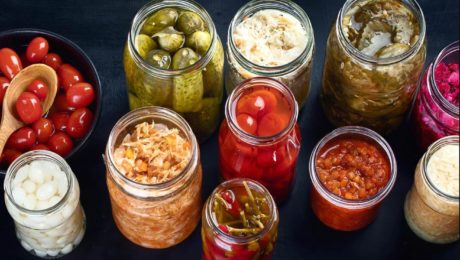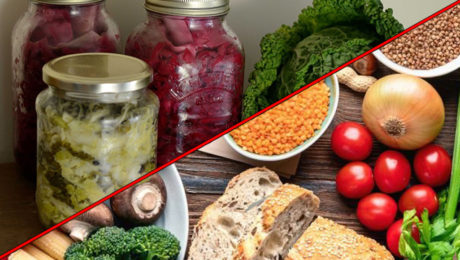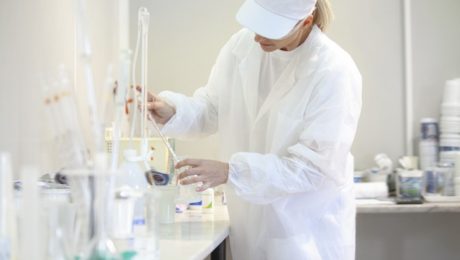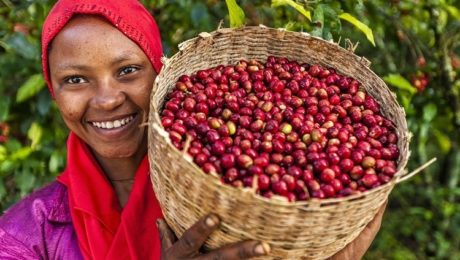Highlights from TFA’s Member Survey
The Fermentation Association recently surveyed our community to better understand who has engaged with us, how their businesses are doing and to gauge the impact of the pandemic. We want to share the very interesting results.
A few qualifying comments first, however. This survey should not be interpreted as producing a profile of the fermented industry — it reached only those with whom we have connected since TFA was launched in 2017. This group is heavily weighted to Food and Beverage Producers and those in the Science, Health and Research fields. And, even as we note surprisingly high response rates below, the quantities of responses to certain questions were small and would not meet standard analytical thresholds of statistical significance. So please treat the comments and conclusions that follow as directional rather than definitive.
We received 450 full or partial responses — nearly twice the number we had expected and what we would have considered “good.” Not surprisingly, the bulk of these were from Food and Beverage Producers — just under half — with a strong representation of the Science, Health and Research community, a little less than one-fifth. The balance of the respondents were classified as Supplier or Service Provider (9%); Chef/Writer/Educator (8%); Retailer/Distributor/Broker (3%); Food Service/Hospitality (3%); or fell into a miscellaneous Other category (12%).
We will be presenting further analyses and follow-up discussions in the coming weeks. This article focuses on the two largest segments: first, Food & Beverage Producers; then, Science, Health, and Research.
FOOD & BEVERAGE PRODUCERS
- We found that over 80% of our Producers are small businesses with 25 or fewer employees, and 65% had 2020 sales of less than $500,000. That said, over 11% of the companies represented are toward the other end of the spectrum, with 100 or more on staff, and 13% with revenue of over $10 million.
- We reach a lot of Owners/Founders/Senior Executives, over 70% of respondents. The next most well-represented functional areas are Operations and Product Development.
- These businesses are spread across the developmental timeline — a little over 40% are selling at the local level, or earlier in their growth cycle (selling at farmers market or still in testing/pre-launch mode). Yet 45% are selling regionally, nationally or internationally.
- Retail is still the largest (45%) channel of sale for these producers, but Direct-to-Consumer (DTC) is just slightly behind at 40%, with the remaining 15% through Food Service/Hospitality.
- Sauerkraut/Kimchi, Pickles, Condiments/Sauces and Kombucha were the most frequently-listed product categories, each mentioned by more than 20% of the producers. Kefir, Vinegar/Shrubs, Wine and Miso also were mentioned often. Of the 25 product categories listed, we had respondents involved in every one — except poor, slimy, and unrepresented natto.
- Nearly half of producers selling at retail and/or DTC had sales gains in 2020 and another third maintained their revenues. Not surprisingly, nearly 40% of producers selling into food service saw sales take a hit — only 15% reported gains.
- The Covid-19 pandemic caused a host of issues for producers, though their prevalence seemed to vary depending on the size of the company. Among larger producers, over 90% had issues meeting demand, with the primary problems being shortages of raw materials, packaging and staff, as well as distribution delays. Fewer of the small producers reported issues, but their problems fell into the same categories. Financial difficulties were cited more often among small producers.
- Nearly 30% of producers took advantage of the government’s Payroll Protection Plan.
- This year appears to continue or build on the sales levels achieved in 2020 for most producers. Nearly 40% report first quarter 2021 sales at the same level as last year, and nearly 50% reported further increases. And producers are optimistic about continuing these trends, with a mere 5% anticipating sales declines.
- Most (nearly two-thirds) of responding producers did not participate in tradeshows and conferences, and therefore felt no business impact from show cancellations in 2020.
- The producers that did participate in events favored the Natural Products Expos, Fancy Food Shows and IFT Show. While some felt that they lost short-terms sales and their future growth was hurt by the shows being cancelled, nearly 30% noted that they saved money and time by not attending. Some of those savings were reinvested in increased marketing, DTC sales and virtual events.
- Interestingly, half of the producers plan to continue their involvement as events resume at the same level as before the pandemic, and fully one-third plan to increase activity.
- Looking ahead, producers see numerous challenges on the horizon, led by a need for expanded distribution. They expect many of the recent shortages to continue to challenge, compounded by production, facility and financial constraints. While Covid protocols and food safety concerns persist, they are joined by the need for product development, e-commerce skills, and consumer marketing
- The clearly-articulated top priority for producers is a better-educated consumer. When asked what would foster increased consumption of fermented foods and beverages, the top item for nearly 70% is consumer education as to the nature and benefits of fermentation. The next highest priorities all support this same goal — more research into health impact (+40%), greater familiarity with flavors of fermentation (+40%) and more exposure at retail (+30%).
SCIENCE, HEALTH & RESEARCH
- The bulk — nearly 75% — of these respondents work in an academic environment, with very small clusters in government and medical/health organizations. It’s a well-educated group, with over half holding doctorates, plus another quarter with Master’s degrees. Roles are split quite evenly into thirds — professors, science/technical support and students/postdocs.
- Over 60% of these respondents are looking into connections between fermentation and health; roughly half are specifically focused on gut health and the human microbiome. Overall, three-quarters are currently researching fermentation and fermented products. Their activities, though, span the full spectrum of product categories. All the key categories among our producers — Sauerkraut/Kimchi, Pickles, Condiments/Sauces, Kombucha and Kefir — were well-represented in research. But they were joined by meaningful work across the board — Yogurt, Beer, Cheese, Alternative Proteins, Koji, Wine, Sourdough, Tempeh, Tea — even Natto!
- Slightly more than a third of this group is involved with fermented alternative proteins – an important, emerging category.
- Funding for research showed more declines (30% of respondents) than gains (under 15%) over the last year. But half of our sample expects funding to increase in the coming 12-18 month.
- Our Science, Health & Research respondents were split in how they viewed the interest in fermentation research — 60% felt the focus was increasing, but the topic was not yet a top priority. Yet a third saw fermentation as a hot topic, with more emphasis and activity than ever.
- Respondents in this group shared the views of producers that the key activities that would drive increased consumption of fermented products are:
- Consumer education about fermentation
- More research into health benefits
- Greater consumer familiarity with fermented flavors
- Published in Business, Food & Flavor, Health, Science
Fermentation vs. Fiber — Both Help, but Fermentation Shines
A diet high in fermented foods increases microbiome diversity, lowers inflammation, and improves immune response, according to researchers at Stanford University’s School of Medicine.The groundbreaking results were published in the journal Cell.
In the clinical trial, healthy individuals were fed for 10 weeks, a diet either high in fermented foods and beverages or high in fiber. The fermented diet — which included yogurt, kefir, cottage cheese, kimchi, kombucha, fermented veggies and fermented veggie broth — led to an increase in overall microbial diversity, with stronger effects from larger servings.
“This is a stunning finding,” says Justin Sonnenburg, PhD, an associate professor of microbiology and immunology at Stanford. “It provides one of the first examples of how a simple change in diet can reproducibly remodel the microbiota across a cohort of healthy adults.”
Researchers were particularly pleased to see participants in the fermented foods diet showed less activation in four types of immune cells. There was a decrease in the levels of 19 inflammatory proteins, including interleukin 6, which is linked to rheumatoid arthritis, Type 2 diabetes and chronic stress.
“Microbiota-targeted diets can change immune status, providing a promising avenue for decreasing inflammation in healthy adults,” says Christopher Gardner, PhD, the Rehnborg Farquhar Professor and director of nutrition studies at the Stanford Prevention Research Center. “This finding was consistent across all participants in the study who were assigned to the higher fermented food group.”
Microbiota Stability vs. Diversity
Continues a press release from Stanford Medicine News Center: By contrast, none of the 19 inflammatory proteins decreased in participants assigned to a high-fiber diet rich in legumes, seeds, whole grains, nuts, vegetables and fruits. On average, the diversity of their gut microbes also remained stable.
“We expected high fiber to have a more universally beneficial effect and increase microbiota diversity,” said Erica Sonnenburg, PhD, a senior research scientist at Stanford in basic life sciences, microbiology and immunology. “The data suggest that increased fiber intake alone over a short time period is insufficient to increase microbiota diversity.”
Justin and Erica Sonnenburg and Christopher Gardner are co-authors of the study. The lead authors are Hannah Wastyk, a PhD student in bioengineering, and former postdoctoral scholar Gabriela Fragiadakis, PhD, now an assistant professor of medicine at UC-San Francisco.
A wide body of evidence has demonstrated that diet shapes the gut microbiome which, in turn, can affect the immune system and overall health. According to Gardner, low microbiome diversity has been linked to obesity and diabetes.
“We wanted to conduct a proof-of-concept study that could test whether microbiota-targeted food could be an avenue for combatting the overwhelming rise in chronic inflammatory diseases,” Gardner said.
The researchers focused on fiber and fermented foods due to previous reports of their potential health benefits. High-fiber diets have been associated with lower rates of mortality. Fermented foods are thought to help with weight maintenance and may decrease the risk of diabetes, cancer and cardiovascular disease.
The researchers analyzed blood and stool samples collected during a three-week pre-trial period, the 10 weeks of the diet, and a four-week period after the diet when the participants ate as they chose.
The findings paint a nuanced picture of the influence of diet on gut microbes and immune status. Those who increased their consumption of fermented foods showed effects consistent with prior research showing that short-term changes in diet can rapidly alter the gut microbiome. The limited changes in the microbiome for the high-fiber group dovetailed with previous reports of the resilience of the human microbiome over short time periods.
Designing a suite of dietary and microbial strategies
The results also showed that greater fiber intake led to more carbohydrates in stool samples, pointing to incomplete fiber degradation by gut microbes. These findings are consistent with research suggesting that the microbiome of a person living in the industrialized world is depleted of fiber-degrading microbes.
“It is possible that a longer intervention would have allowed for the microbiota to adequately adapt to the increase in fiber consumption,” Erica Sonnenburg said. “Alternatively, the deliberate introduction of fiber-consuming microbes may be required to increase the microbiota’s capacity to break down the carbohydrates.”
In addition to exploring these possibilities, the researchers plan to conduct studies in mice to investigate the molecular mechanisms by which diets alter the microbiome and reduce inflammatory proteins. They also aim to test whether high-fiber and fermented foods synergize to influence the microbiome and immune system of humans. Another goal is to examine whether the consumption of fermented foods decreases inflammation or improves other health markers in patients with immunological and metabolic diseases, in pregnant women, or in older individuals.
“There are many more ways to target the microbiome with food and supplements, and we hope to continue to investigate how different diets, probiotics and prebiotics impact the microbiome and health in different groups,” Justin Sonnenburg said.
Other Stanford co-authors are Dalia Perelman, health educator; former graduate students Dylan Dahan, PhD, and Carlos Gonzalez, PhD; graduate student Bryan Merrill; former research assistant Madeline Topf; postdoctoral scholars William Van Treuren, PhD, and Shuo Han, PhD; Jennifer Robinson, PhD, administrative director of the Community Health and Prevention Research Master’s Program and program manager of the Nutrition Studies Group; and Joshua Elias, PhD.
Researchers from the nonprofit research center Chan-Zuckerberg Biohub also contributed to the study. Here’s the complete press release from Stanford Medicine News Center.
More Than One SCOBY?
A SCOBY is the gelatinous bacteria colony central to making kombucha. But did you know there are four different types of SCOBY? Scientists at Oregon State University spent the past four years researching the microorganisms that contribute to the tea fermentation that produces kombucha. The results of their work were published in the journal Microorganisms.
SCOBY is a challenging mystery to many kombucha brewers. Little is known about how SCOBY impacts flavor. The OSU scientists aim to help kombucha brewers make a more consistent product.
“Without having a baseline of which organisms are commonly most important, there are too many variables to try and think about when producing kombucha,” says Chris Curtin, an assistant professor of fermentation microbiology at OSU. “Now with this research we can say there are four main types of SCOBY. If we want to understand what contributes to differences in kombucha flavors we can narrow that variable to four types as opposed to, say, hundreds of types.”
Curtin and doctoral student Keisha Harrison used DNA sequencing to evaluate the microorganisms in 103 SCOBYs used by kombucha brewers (primarily ones in North America). The four SCOBY types each use different combinations of yeast and bacteria.
Read more (Oregon State University)
- Published in Food & Flavor, Science
Natural Production Changing the Wine Industry
Natural winemaking is moving mainstream, as more viticulturists preach the importance of soil health and shun traditional herbicides. “Where does natural wine finish and conventional wine start? These days, it’s hard to tell,” reads an article in Vinepair. Though the vast majority of global wine production still relies on conventional methods, the virtues of natural winemaking are helping change the industry.
“While it used to be rare for wines to be fermented with wild yeast — allowing the microbes present on the grapes to carry out fermentation — this is now much more common. And conventional producers have been prompted to question their use of additives such as sulfur dioxide. In fact, many aspects of winemaking that were championed by natural wine folk have now become much more common, even replacing some of the triumphs of more heavy-handed methods. As more producers trend away from making big, international-style reds with dark color, sweet fruit, high alcohol, and obvious new oak character, extracting less color and tannin for lighter-style reds is gaining popularity.”
Read more (Vinepair)
- Published in Food & Flavor
Picturing Traditional Sake
Hoping to spur interest in traditional sake, a Japanese producer has published a picture book What is Sake? that takes readers on a tour of their sake facility. Suigei Brewing Co., based in the western city of Kochi, uses the book to detail how sake is made. The bilingual book includes English translations.
The president of Suigei Brewing Co., Hirokuni Okura, notes Japan’s sake culture is gradually being forgotten. He said he desires to “have both adults and children view sake, an element of Japanese food culture, as something close to them.”
The book’s illustrator, Misae Nagai, featured all 53 employees of Suigei in her charming illustrations.
Read more (The Mainichi)
- Published in Business, Food & Flavor
Dunkin’ Kombucha
Move over, Dunkin’ Coffee. The chain known for its coffee and donuts is branding itself into new territory — kombucha. Dunkin’ is the first chain restaurant (to TFA’s knowledge) to make their own kombucha. They are testing their new Dunkin’ Kombucha — made in two flavors, Fuji Apple Berry and Blueberry Lemon — in select restaurants in the Albany, N.Y., and Charlotte, N.C., markets.
According to their release, “Dunkin’ continues to democratize delicious by testing kombucha for the first time.” In any case, this test is further evidence of the fermented tea’s increased popularity as an alternative to soda.
Read more (Dunkin’)
- Published in Business
A New Breed of Animal-Free Milk
Can you imagine dairy-free milk without a nut or oat? An Israeli start-up is using precision fermentation to create animal-free milk “indistinguishable from the real thing.”
Imagindairy’s technology recreates the whey and casein proteins found in a mammal’s milk. The fermentation time is quick at 3-5 days, and the final product mimics the taste and texture of traditional dairy milk, without cholesterol or GMOs. The product is expected to be in stores in the next two years.
“Many food products are produced in fermentation, including enzymes, probiotics and proteins,” says Eyal Afergan, co-founder and CEO of Imagindairy. He emphasized how safe the product is. “In fact, on the contrary, fermentation process produces a cleaner product which is antibiotic free and reduces the exposure to a potential milk borne pathogens.”
Read more (Food Navigator)
Sake Brewers Suffer in Japan
As Covid-19 restrictions are lifted, American sake breweries are opening their doors to customers again. But across the world in Japan, where sake originated, many izakaya or sake pubs remain closed. Japanese brewers expect sales to slump for a second year in a row because of the pandemic.
“This right now might be the most challenging time for the industry,” says Yuichiro Tanaka, president of Rihaku Sake Brewing. “There’s nothing much we can do about that. In our company, we’re trying to become more efficient and streamline our processes so that once the world economy returns to what it formerly was, we’ll be able to much more efficiently fill orders.”
Tanaka, Miho Imada (president and head brewer of Imada Sake Brewing) and Brian Polen (co-founder and president of Brooklyn Kura) spoke in an online panel discussion Brewers Share Their Insider Stories, part of the Japan Society’s annual sake event. John Gauntner, a sake expert and educator, moderated the discussion and translated for Tanaka and Imada, who both gave their remarks in Japanese. (Pictured from left to right: Gautner, Tanaka, Imada and Polen.)
Recovery Struggles
Japan — which has been slow to vaccinate (only 9% of the population has been fully vaccinated, compared to 47% in the United States) — is currently in a third state of emergency. In the country’s large cities, no alcohol can be served in restaurants. “This is just devastating to the industry,” says Gaunter.
Though sake pubs in smaller metropolitan areas and countryside regions are allowed to be open, few people are out drinking. Many pubs have closed, and others refuse entry to anyone from outside of their prefecture.
“Sales of sake are very seriously affected,” says Imada, one of few female tôji or master brewers. “Rice farmers that grow sake rice are seriously affected as well. If brewers can’t sell sake, they have no empty tanks in which to make sake, so they don’t order any rice and the effects are transmitted down to rice farmers.”
Sake rice is more challenging to grow than table rice because the rice grains must be longer. The amount of sake rice planted in Hiroshima — where Imada Sake Brewing is based — is down 30-40%. Farmers may give up growing sake rice and switch to table rice for good.
The effects of Covid-19 on Japan’s sake brewers will linger into the fall when the next brewing season starts again.
“We cannot really expect a recovery in the amount of sake produced next season, and so therefore production will drop for two years in a row,” she says.
Premium sake brewers with rich generational historys — like Imada Sake Brewing and Rihaku Sake Brewing — are struggling to sell their high-end products.. Department store in-store tastings — a boon to premium sake brewers — have disappeared.
Adapting to Covid
In New York, as pandemic recovery efforts continue, Polen has seen the pent-up demand from consumers. Brooklyn Kura’s retail, on-premise and taproom sales are increasing. After scaling back production and their team in 2020, Brooklyn Kura is now hiring again.
“More importantly, and I think the silver lining out of this, we really needed to redouble our efforts to create a direct line of communication with our best customers,” Polen says.
During the pandemic, Brooklyn Kura launched both a direct-to-consumer business and a subscription service featuring limited-run sakes. “That’s helped us on our road to recovery.”
Imada Sake, too, found ways to improve business. They’re selling bottles and hosting tasting events through their website.
“One of the principles of the Hiroshima Tôji Guild [guild of master sake brewers], the expression is ‘Try 100 things and try them 1,000 times.’ Or in other words the point is keep trying new things and see what contributes towards improvement,” Imada says. “These words convey the spirit of using skill and technique or technology to get beyond difficulties.”
Imada Sake exports 20% of its production; as more countries recover, exports continue to grow. Direct-to-consumer sales, she says, vary and are only constant around Christmas.
Rihaku Sake sells much of their sake to distributors and is seeing international exports increase. They also began direct-to-consumer internet sales, but that channel “didn’t grow as much as I was hoping.”
Consumer Education
France and Italy export billions of dollars of wine a year. Polen argues that sake could be an equally profitable export for Japan. Education and exposure, he says, are the challenge.
“In craft beer and fine wine, a lot of those initial encounters with those products come in places like the tap room in Brooklyn or the wineries in California or the local craft brewery, so creating more of those connection points and initial introduction points in a market like the U.S., having a better facility to distribute sake across the U.S., will help to expand the market, not just to domestic producers but also for the storied producers of Japan as well,” Polen says.
Sake is the national beverage of Japan, and strict brewing laws strive to keep it pure. Japanese sake can only be made with koji and steamed rice. Add hops to it and the drink cannot be called sake legally anymore.
Many sake tôji in Japan are running a multi-generational family brewery.“These craftsmen, who have been brewing sake since they were young, have decades of experience to develop what we call keiken to chokkan or experience and intuition,” Tanaka says, adding that Japan is the only place to buy certain industrial-sized sake making machines such as steamers and pressers. “There’s a lot of advantages that breweries in Japan have. If brewers overseas get too good, this might actually cause problems for brewers in Japan. However, more important than that, I think it’s important for all of us to continue to study how to make better and better sake so everyone around the world can enjoy it.”
Rihaku tries to make their sake recognizable to local consumers who are unfamiliar with the rice wine. Their Junmai Ginjo sake has the nickname “Wandering Poet,” a reference to the famous poet Li Po. Legend says Li Po drank a bottle of sake then wrote 1,000 poems.
“We think a lot about how to get more people that are non-Japanese and outside of the Japanese context excited about sake making and excited about the sake we make,” Polen says. “That includes those folks that are passionate fermenters, like the beer community, that really want to know and learn about things like spontaneous fermentation. So (sake) styles, like yamahai and kimoto, are very easy transition points, very easy talking points for us with that community of brewers and consumers that are really excited to drill deeper into fermentation, especially natural fermentation.”
- Published in Business
Advances in Yeast
We’re in the midst of a yeast revolution, as genome sequencing creates opportunity for cutting-edge advances in fermented foods and drinks. Yeast will be at the forefront of innovation in fermentation, for new flavors, better quality and more sustainability.
“Understanding and respecting tradition is a key part of this. These practices have been tested for hundreds and thousands of years and they cannot be dismissed. There’s a lot the science can learn from tradition,” says Richard Preiss of Escarpment Laboratories. Priess was joined by Ben Wolfe, PhD, associate professor at Tufts University (and TFA Advisory Board member), during a TFA webinar, Advances in Yeast.
Preiss continues: “There’s still a place for innovation, despite such a long history of tradition with fermentation. A lot of the key advances in science are literally a result of people trying to make fermentation better.”
Wolfe, who uses fermented foods and other microbial communities to study microbiomes in his lab at Tufts, said “there’s this tradition versus technology conflict that can emerge.”
“I tell my students when I teach microbiology that much of the history of microbiology is food microbiology, it is actually food microbes, and they really drove the innovation of the field so it really all comes back to food and fermentation,” Wolfe says.
The technology relating to the yeasts used in fermentation has expanded enormously over the last decade, due heavily to advances in genome sequencing. Studying genetics allows labs like the ones Priess and Wolfe run to find the genetic blueprint of an organism and apply it to yeast. Drilling down further, they can tie genotype to phenotype to determine characteristics of a yeast strain. This rapidly expanding technology will disrupt and advance fermentation.
Priess predicted three areas of development for yeast fermentation in the coming years:
- Novelty Strains
Consumers have accelerated their acceptance of e-commerce during the Covid-19 pandemic and they’ll do the same for biotechnology, Priess says.
“Our industry does thrive on novelty,” he adds, noting there are beer brands already creating drinks with GMO yeast. “Craft beer is going to be the first food space where the use of GMOs is widespread — we’re seeing that play out a lot faster than I ever thought it would be with some of these products already on the market. Novelty does have value.”
Wolfe noted many consumers shudder at the idea of a GMO food or beverage, but microbes in beer are dead. Consumers are not drinking a living GMO in beer.
Yeasts also already pick up new genetic material naturally, through a process called gene transfer.
“It’s part of the evolutionary process that all microbes go through,” Wolfe says. “From my own lab and from other labs, cheese and sauerkraut and all these other fermented foods are showing so much genetic exchange that’s already happening.”
- Climate Change
The food industry must address growing concerns about climate change. Priess predicts breeding plants — like barley, hops and grapes — that are more drought-tolerant, or even using yeast technologies to increase yields or the rate of fermentation.
“Craft beer is massively wasteful,” Priess says. It takes between three to seven barrels of water to make one barrel of beer. “It is something we’re going to have to reckon with the next 10 years.”
Yogurt and cheese, too, produce large amounts of waste products.
- Ease of Genomics
The cost and time of genome sequencing has reduced significantly. It used to cost thousands of dollars and take many weeks to document a yeast genome. Now, it can be done for $200 in only a few days.
“The tools to deal with the data and get some meaning from it have never been more accessible. It’s incredibly powerful,” Priess says. “We’re developing solutions for products without millions of dollars.”
Priess does not agree with companies patenting yeasts, “it’s murky territory.” He believes fermentation and science should be about collaboration, not ownership and protection.
“Working with brewers and other fermentation enthusiasts, it’s this incredibly open and collaborative space compared to a lot of the industries,” he says. “I think that’s like our secret weapon or our secret value is that fermentation is so open in terms of access to knowledge as well as in terms of people being willing to experiment and try new things. That’s how it’s able to develop so quickly.”
- Published in Food & Flavor, Science
Fermentation Time Shapes Coffee Flavor
Adding to the growing research on fermentation and its impact on coffee’s flavor, food corp Nestlé released their own study on the link between coffee and fermentation. Scientists found that the length of time coffee cherries (or beans) are fermented is key to final flavor. They plan to use their findings to “tailor specific fermentation conditions to different coffee varieties, allowing us to highlight new distinct natural flavors and sensorial notes.”
“While several favors affect coffee quality, we showed a subtle combination of specific fermentation conditions can lead to a modulation of the sensory properties of the final cup, opening new avenues to differentiate coffee taste in a fully natural way,” said Cyril Moccand, a scientist at Nestlé Research who led the study.
On August 11, The Fermentation Association will host a webinar with the Specialty Coffee Association “The State of the Art in Coffee Fermentation.”
Read more (Beverage Daily)
- Published in Food & Flavor, Science










